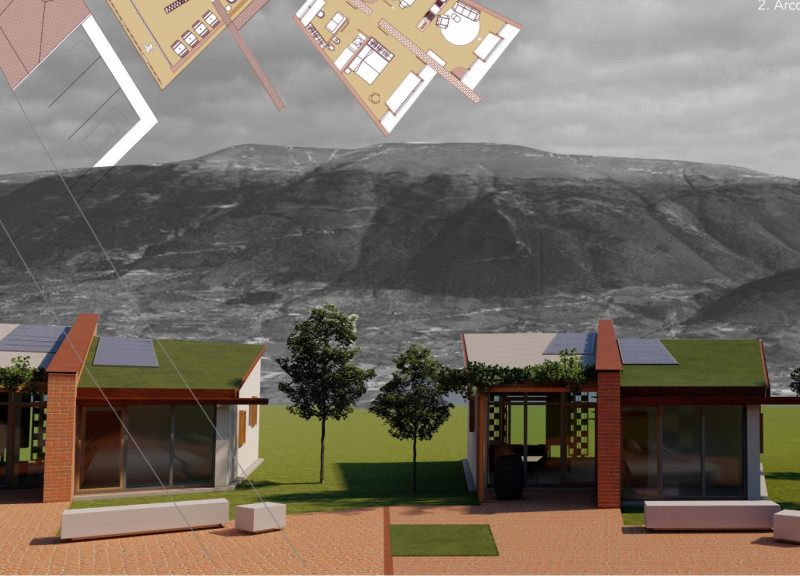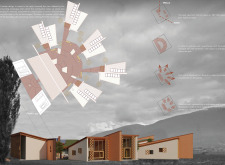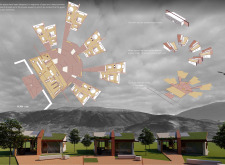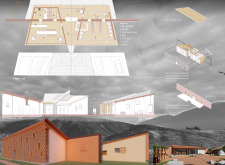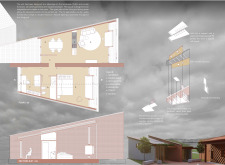5 key facts about this project
The architectural layout revolves around a central communal area that serves as the focal point of the estate. Surrounding this core are a series of guest houses that are strategically oriented to provide intimate vistas of the landscape, ensuring that each unit benefits from optimal light conditions and natural scenery. The arrangement creates a village-like atmosphere, enhancing community engagement while respecting the need for personal space.
SUSTAINABILITY AND MATERIALITY
One of the project’s standout features is its commitment to sustainability. The use of cross-laminated timber (Xlam) as the primary structural material allows for lightweight construction while maintaining structural integrity. This selection not only provides thermal efficiency but also exemplifies modern sustainable architectural practices. The introduction of locally sourced bricks as a cladding material complements the regional context and supports thermal mass, reducing reliance on mechanical heating and cooling systems.
Additionally, the incorporation of green roofs on some guest houses contributes to biodiversity and assists in stormwater management. Photovoltaic panels serve a dual purpose, generating renewable energy while seamlessly integrating into the overall architectural expression. These choices reflect a design ethos that prioritizes environmental stewardship without compromising on aesthetic appeal.
DESIGN INNOVATIONS AND ADAPTABILITY
The Tili project innovates through its flexible design strategy, where guest houses can be customized to accommodate different occupancy needs. This adaptability is achieved through modular configurations that allow for a transformation of spaces from single to double units, meeting a variety of guest expectations.
The architectural expression further distinguishes the project. Carefully calibrated window placements and the use of external shading devices crafted from wood create a dynamic interplay between light and shadow, enhancing interior spaces while providing passive cooling. These design elements are thoughtfully integrated to encourage outdoor living and interaction with the surrounding landscape.
The emphasis on cultural resonance cannot be overlooked. The architectural language reflects local building traditions while incorporating modern design principles. This melding of old and new facilitates a connection with the heritage of the region, making the project relevant both to its users and to the wider community.
For those interested in exploring the intricate details of the Tili project, including architectural plans, sections, and design specifics, a comprehensive review of the project presentation is encouraged. This examination can provide deeper insights into the architectural ideas and design principles that define this project.


